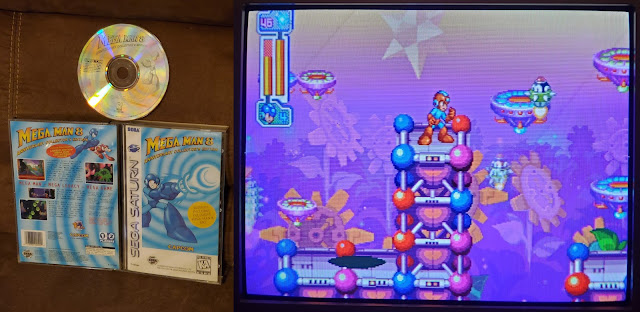Collection essentials #311: Mega Man X4 (Saturn)

Of course it wasn’t just mainline Mega Man that would make the jump to this generation of consoles, as its sister series Mega Man X would as well. As a reminder, the “X” does not stand for “10”, instead it refers to the protagonist named “Mega Man X” who is a distinct character from normal “Mega Man”. Mega Man X4 makes the leap to a more technologically-capable console in roughly the same way as 8 did. That is to say, the graphics remained 2D but had an overhauled look, the basic gameplay concept wasn’t messed with that much, and voice acting and anime cutscenes were added. And, yes, the voice acting is incredibly cheesy to the point where it can be amusing. This does kill the serious vibes that the developers originally intended, unfortunately, but to me it doesn’t ruin the game by any means. Mega Man X4 once again requires you to take on eight “mavericks” whose stages can be tackled in any order, which works very much like regular Mega Man and its robot masters. And like b...












